So, Ben also thought that The Adventures of Ichabod and Mr. Toad was also ‘meh’ (although he did enjoy Ichabod’s story more than I expected). Onto the 1950s!
Cinderella is one of my all-time favourite Disney films and despite The Little Mermaid being the first Disney film that I saw at the cinema, Cinderella really takes me back to my childhood. I didn’t realise how much, until I watched it this time with Ben. Upon reflection, I take back my labelling of her as another ‘young woman waiting to be rescued by a man’ in my ‘Evolution of Feminism Through Disney Princesses’ post. She wasn’t waiting to be rescued by a man. She was in a horrible situation she didn’t know how to get out of. She only wanted to go to the ball to get dressed up and go to a party. She lucked out by meeting the prince, who would’ve had the power behind him to get her out of that horrible household! And to be fair to her, despite how horrible her previous life was, she managed to stay positive and kind throughout the whole thing. She’s a role model, if anything.
The story is based on several folk tales throughout history. When I was looking into this, I came across the name of one of these collections of stories, ‘Lo cunto de li cunti’. I’m sorry, I couldn’t leave that out (and I need to grow up!). Disney’s adaptation appears to be most closely based on the Charles Perrault story ‘Cendrillon ou la petite pantoufle de verre’ (Cinderella or the little glass slipper), although I think the ending of Brothers Grimm’s ‘Aschenputtel’ would give Ben his closure on a suitable comeuppance for the stepsisters, though (they have their eyes pecked out by doves).
Anyway, let’s see if my high recommendation of the first film of the 1950’s has had the hoped-for reaction from Ben.
8.5/10
Kerry 😁
I have no doubt that Kerry’s cunning scheme by having me watch all things Disney was not just to fill the niche of ‘cynic providing counter-points’ to the millions of reviews by Disney-holics subconsciously seeking silver-linings on every surrealist-nightmare-indulgent-deer-slaughtering-donkey-slave-child cloud. I know she would love me to become a Disney-holic just like her, and challenge one, was to get me to watch the films. Although in itself that wasn’t an easy task, and it took about a dozen years to get me on board, she eventually succeeded as I’m about to review my 11th film. The second challenge, however, was to get me to LIKE what I’m watching. This is where, thus far, my feelings have been similar to Disney’s attempts to sell Latin America to me through the medium of traditional dance and sycophantic parrots. I’m rather unimpressed. But, to be fair, Kerry was never really expecting the pre 1950 Animation Studios films to wow me, as for most part, they don’t wow her. But now we’ve reached the start of, what Kerry calls “Disney’s Golden Age”. It’s an era that she reveres, and if the second challenge of me liking some films is to succeed, then the next batch of movies will be full of possible contenders to make that happen. At least that’s what I’ve been told. The first of these golden entries is 1950’s ‘Cinderella’.
If I was asked to name a Disney film, the first that pops to mind is ‘Cinderella’. Is that a common first thought? It’s the first, and one of the only entries in the series where I already know the story before watching it. I’ve seen interpretations at least once in the form of a Christmas Pantomime and countless other mini versions and parodies on television. Yet I’ve never actually watched the Disney film version. Some people think that’s strange that I’ve never watched it at any time. Most people seem to watch it at least once when they are a child, but I never did. I suppose if you were to ask my childhood self (or my adult self) if I want to watch a story about a girl falling in love with a Prince, when there’s sports channels to compete with, we’re deep into no-brainer territory.
I don’t know if I was expecting the start of the film to be radically different to the previous ones as we’re now in a new decade and this film is much more highly regarded than the last few that I’ve endured (and I mean endured), but my god it’s not. It’s still dated, it’s still a slow crooner ballad, and I still hate it. I pass the time by looking for ‘Ub Tweeks’ in the credits (he was in the credits for the last film ‘The Adventures of Ichabod and Mr Toad’), but I’m disappointed to find that he isn’t there. Maybe he was the scapegoat for the previous films lack of commercial success and had to go to appease the company’s investors. Poor Ub (tries to resist temptation to make joke about what goes Ub must come down).
The story starts at a stately chateau, where Cinderella’s father decides to remarry so she gets a mother figure back in her life. The stepmother has two daughters and…. you all know this. Everyone knows this. I can never remember the stepsister’s names, so I’ll call them Stepsister One and Stepsister Two. And after Cinderella’s father dies, they and their mother treat Cinderella like shit. The actual term they use is “they abuse her”… Wow that term always darkens the tone. To like, a level that I’m uncomfortable with. I suppose it will make her eventual freedom feel that much more special though.
 Cinderella gets woken in the morning by some extremely clever birds and mice. Is it going to be a Disney princess thing that they are all mates with stupidly advanced fauna? Snow White was the same. Still, give me a bird that can do rudimentary household tasks over a slice of Latin propaganda any day of the week. Within three minutes, she’s singing. Her voice isn’t as horrific as Snow Whites, but suffice to say, I’m rolling my eyes and preparing for the worst. Golden age, my arse. She has a bath whilst the birds cop a good perv. Then the mice start talking to her. I cannot understand a word of it. Kerry can. Once again, she demonstrates she is fluent is Disnish, much like when Donald Ducks talks, and I’m lost at sea, so she translates for me. Ooh, I just thought; there will be no Donald-sodding-Duck in this film! Unless there’s a highly unusual twist anyway. So that’s a good thing at least. Apparently, the mice are saying that a new mouse has been caught. Ah, yes, a mouse has indeed been caught. So Cinderella follows the usual protocol. She opens the humane trap, and then talks to him, and then puts a jumper on him and gives him a name… wait a second, she does what now?! All the other mice have little mouse clothes too. Ok, her imprisonment at the hands of her stepfamily have clearly sent her bat-shit crazy. Or maybe she’s just suffering the psychological effects of Lassa fever or the bubonic plague due to the fact she spends her days TRYING TO FORCE RATS INTO FUCKING CLOTHING! …Exhale.
Cinderella gets woken in the morning by some extremely clever birds and mice. Is it going to be a Disney princess thing that they are all mates with stupidly advanced fauna? Snow White was the same. Still, give me a bird that can do rudimentary household tasks over a slice of Latin propaganda any day of the week. Within three minutes, she’s singing. Her voice isn’t as horrific as Snow Whites, but suffice to say, I’m rolling my eyes and preparing for the worst. Golden age, my arse. She has a bath whilst the birds cop a good perv. Then the mice start talking to her. I cannot understand a word of it. Kerry can. Once again, she demonstrates she is fluent is Disnish, much like when Donald Ducks talks, and I’m lost at sea, so she translates for me. Ooh, I just thought; there will be no Donald-sodding-Duck in this film! Unless there’s a highly unusual twist anyway. So that’s a good thing at least. Apparently, the mice are saying that a new mouse has been caught. Ah, yes, a mouse has indeed been caught. So Cinderella follows the usual protocol. She opens the humane trap, and then talks to him, and then puts a jumper on him and gives him a name… wait a second, she does what now?! All the other mice have little mouse clothes too. Ok, her imprisonment at the hands of her stepfamily have clearly sent her bat-shit crazy. Or maybe she’s just suffering the psychological effects of Lassa fever or the bubonic plague due to the fact she spends her days TRYING TO FORCE RATS INTO FUCKING CLOTHING! …Exhale.
 Cinders then takes her stepmother’s fatfuck cat down for breakfast. This cat is a dickhead. The fact its name is Lucifer should be a hint there. Makes you really wonder the mentality of the stepmother to name her pet Lucifer. Perhaps she had another cat named Beelzebub that got run over by a speeding horse and cart? There is also a dog in the kitchen. He is not a dickhead. Cinders tries to make them get along after discovering the dog was dreaming about chasing the cat (perfectly normal, people discuss their pet’s dreams with them all the time). The dog tries, but the cat is being a troll though. As I said. Dickhead.
Cinders then takes her stepmother’s fatfuck cat down for breakfast. This cat is a dickhead. The fact its name is Lucifer should be a hint there. Makes you really wonder the mentality of the stepmother to name her pet Lucifer. Perhaps she had another cat named Beelzebub that got run over by a speeding horse and cart? There is also a dog in the kitchen. He is not a dickhead. Cinders tries to make them get along after discovering the dog was dreaming about chasing the cat (perfectly normal, people discuss their pet’s dreams with them all the time). The dog tries, but the cat is being a troll though. As I said. Dickhead.
Then we get about ten minutes of the mice (who some, especially Gus, already look like they have eaten plenty) trying to get food without being chased by the cat. In fact by the time we get to about 15 minutes in, I reckon at least ten of those have been focusing on the animals. At this point, I’m honestly wonder why the film is called ‘Cinderella’ and not ‘The adventures of Fatfuck Mice and Even-Fatterfuck Cat’.
The stepfamily starts to demand their breakfast, but Gus the mouse is hiding from Dickhead-cat in one of the stepsister’s teacups. Obviously, this winds up with screaming and Cinders getting punished for a presumed practical joke. This involves many chores. The stepmother really is a bitch.
Now we go to another castle. The king is wondering, to the Duke, why his son is still not getting together with a girl. And why he always hangs around with his good chum Gregory. I’m totally lying with that last part, but you can see what my initial conclusion is. Although if that is the case, I wish both the prince and Gregory a lifetime of happiness. However, unless this story takes a remarkably different direction to the other versions I’ve seen, then I suspect the Prince is merely waiting for someone who can fulfil his requirements in a partner by being sweet, well-practiced in household chores and act as a much needed translator for all Prince/wildlife communications. Never fear Prince Charming, your dream girl is just over the hill and cleaning carpets with a positive smile and talking to mice… Anyway, the King is going to hold a huge ball with all the local spinsters to tempt Prince Charming into providing him with a grandchild, and away from Gregory.
 After hearing the stepfamily play horrible music, we cut to Cinderella who is doing her chores and singing. Then we go VERY Disney. Lots of bubbles with Cinderella’s face in them, etc, etc… The whole scene is a lot quicker than the meanderings in previous films, but there must be some sort of contractual obligation that animators get at least a certain amount of time to indulge in artistic wankery. An invitation to the ball is delivered. The stepsisters are very excited and scoff when they discover that Cinderella wants to go. The problem is that all single chicks must attend. So the Stepmother says Cinderella can go as long as she finishes her chores and can get something nice to wear.
After hearing the stepfamily play horrible music, we cut to Cinderella who is doing her chores and singing. Then we go VERY Disney. Lots of bubbles with Cinderella’s face in them, etc, etc… The whole scene is a lot quicker than the meanderings in previous films, but there must be some sort of contractual obligation that animators get at least a certain amount of time to indulge in artistic wankery. An invitation to the ball is delivered. The stepsisters are very excited and scoff when they discover that Cinderella wants to go. The problem is that all single chicks must attend. So the Stepmother says Cinderella can go as long as she finishes her chores and can get something nice to wear.
 As she has so many chores to do, she hasn’t got time to make her mother’s old dress fit for purpose, but fortunately that’s where the remarkably advanced mice and birds are at hand. They decide to surprise her by giving it a makeover. Then the mice start singing in their squeaky way, because God forbid they could just have a nice conversation whilst they do the dress maintenance. Beer time for me, I think. The mice also steal an unwanted sash and necklace from the stepsisters, despite Fatfuck Cat’s attempts to be its dickhead self and thwart them. Honestly, if the cat was named something like Fluffy or Buttercup or Sparkles or Kevin, rather than Lucifer, it wouldn’t be such a…. well, dickhead.
As she has so many chores to do, she hasn’t got time to make her mother’s old dress fit for purpose, but fortunately that’s where the remarkably advanced mice and birds are at hand. They decide to surprise her by giving it a makeover. Then the mice start singing in their squeaky way, because God forbid they could just have a nice conversation whilst they do the dress maintenance. Beer time for me, I think. The mice also steal an unwanted sash and necklace from the stepsisters, despite Fatfuck Cat’s attempts to be its dickhead self and thwart them. Honestly, if the cat was named something like Fluffy or Buttercup or Sparkles or Kevin, rather than Lucifer, it wouldn’t be such a…. well, dickhead.
8 O’clock comes around, and Cinders tells her stepfamily that she isn’t going as she didn’t get time to get her dress prepared. She goes to her room to discover the animals have not let the lack of opposable thumbs stop them from getting her dress all spruced up for her. That does it, I’m going into the garden to stick some clothes onto some pigeons and hedgehogs, and let them save my skin next time I’m in a jam. Upon showing her their handiwork, Gus says “Happy Birthday!” Stupid mouse.
 Cinders then does something very stupid. I’m already establishing that Disney Princesses are naïve, trusting and see all the positive in the world. I like these rare sort of people and they give me feelings of hope for the world, but my god are they gullible dipshits. Rather than treading with caution and thinking, “my stepfamily probably don’t like me very much or want me to be happy as they ABUSE AND ENSLAVE ME, so I think I should wait for them to go out before leaving my room as it’s quite likely they will attempt to sabotage me.” No, instead, she takes a somewhat different approach and marches downstairs, basically calling “WAIT FOR ME, LOOK AT MY LOVELY DRESS!” You IDIOT! Quite frankly, as the stepsisters partially strip her, there’s a part of me that thinks, “what the hell were you expecting here?”. But even I am left feeling awful for that fictional drawing as it runs into the garden sobbing.
Cinders then does something very stupid. I’m already establishing that Disney Princesses are naïve, trusting and see all the positive in the world. I like these rare sort of people and they give me feelings of hope for the world, but my god are they gullible dipshits. Rather than treading with caution and thinking, “my stepfamily probably don’t like me very much or want me to be happy as they ABUSE AND ENSLAVE ME, so I think I should wait for them to go out before leaving my room as it’s quite likely they will attempt to sabotage me.” No, instead, she takes a somewhat different approach and marches downstairs, basically calling “WAIT FOR ME, LOOK AT MY LOVELY DRESS!” You IDIOT! Quite frankly, as the stepsisters partially strip her, there’s a part of me that thinks, “what the hell were you expecting here?”. But even I am left feeling awful for that fictional drawing as it runs into the garden sobbing.
 You know when things are crappy, and the efforts of wildlife ultimately fail? Thank fuck for Fairy Godmothers! You think it’s all over, and then you see the twinkling stars in the sky and poof! There she is, showing you magic tricks with a pumpkin. That pumpkin is turned into a coach. The mice, who thought their work was done and were probably ready for an early night with a piece of cheese, find themselves turned into horses. Fairy Godmother also gives her a lovely gown and a pair of glass slippers. Now she can go to the ball. But all these things will revert back into their original form at midnight. I have a question. Why? That seems to be cutting it rather close doesn’t it? Wouldn’t tomorrow afternoon make a bit more sense? There are so many potential dramatic pitfalls doing it this way. But then saying that, Fairy Godmother is very old and may have strict rules on sex before marriage, so wants to ensure that Cinderella doesn’t have time to get her end away that night.
You know when things are crappy, and the efforts of wildlife ultimately fail? Thank fuck for Fairy Godmothers! You think it’s all over, and then you see the twinkling stars in the sky and poof! There she is, showing you magic tricks with a pumpkin. That pumpkin is turned into a coach. The mice, who thought their work was done and were probably ready for an early night with a piece of cheese, find themselves turned into horses. Fairy Godmother also gives her a lovely gown and a pair of glass slippers. Now she can go to the ball. But all these things will revert back into their original form at midnight. I have a question. Why? That seems to be cutting it rather close doesn’t it? Wouldn’t tomorrow afternoon make a bit more sense? There are so many potential dramatic pitfalls doing it this way. But then saying that, Fairy Godmother is very old and may have strict rules on sex before marriage, so wants to ensure that Cinderella doesn’t have time to get her end away that night.
At the ball, there appears to be several thousand women there. I think the animators made the crowd look a little too vast. We see Prince Charming being introduced to the stepsisters and it’s fairly clear what he’s thinking: 
“Oh good god these girls are ghastly. Why would Father ever think I would be interested in girls like that? It’s bad enough I’ve got my thumb stuck under my belt and now I have to look at this. Oh what would Gregory say if he could see me now. I miss Gregory.”
But his thoughts of Gregory are clearly interrupted by someone over yonder. A girl that he’s actually attracted to! Who could it be? Spoiler Alert: It’s Cinderella. And they dance. The King clearly thinks his work here is now done and proclaims, “I’m off to bed!” Firstly, is he really that uninterested in the party he would rather go to bed? Secondly, and more importantly, isn’t that rather presumptuous that everything is going to work out? As in, they’ve just started dancing and he’s already decided that it’s a done deal that he’s getting Grandchildren?! Stop and think about that for a second. That is mental. Is he not even going to consider the possibility that after their first dance Cinderella might say, “that was fun, but alas you’re not my type. See ya”?  Or that during the evening Cinderella might start singing a horrible song and his son will leg it? Or that Cinderella will make a quick getaway at midnight when the magic from a fairy godmother starts to run out, in turn destroying her dress and transport? Why is the King not considering these things?! Fortunately it seems Prince Charming has left Cinderella rosy cheeked and moist, so no issues there. Also when Cinderella starts to sing, Prince Charming decides to join in, because Disney. However, the questionable, reckless and bizarre time regulations placed upon the spell come back to create much unnecessary drama when midnight rolls around, causing Cinderella to leg it, minus of course, one of her glass slippers.
Or that during the evening Cinderella might start singing a horrible song and his son will leg it? Or that Cinderella will make a quick getaway at midnight when the magic from a fairy godmother starts to run out, in turn destroying her dress and transport? Why is the King not considering these things?! Fortunately it seems Prince Charming has left Cinderella rosy cheeked and moist, so no issues there. Also when Cinderella starts to sing, Prince Charming decides to join in, because Disney. However, the questionable, reckless and bizarre time regulations placed upon the spell come back to create much unnecessary drama when midnight rolls around, causing Cinderella to leg it, minus of course, one of her glass slippers.
The horses turn back into mice and she sits and reflects. She was just happy to be able to go. She’s a good role model. Interestingly the Fairy Godmother let her keep the other glass slipper as a memento. How lucky.
The King is furious that the girl disappeared. See what happens when you make assumptions? How do we find the girl? Well we have a glass slipper, and the prince will marry whichever girl it fits. Ok, we have a problem here. There aren’t a thousand shoe sizes for a thousand different girls. It seems the Disney writers were also aware of the quandary that the original story left them in to. But how to get out of it?
“Right guys, there are like 16 different shoe sizes that girls can have, including half sizes, and we need to somehow convince the audience that this glass slipper will only fit Cinderella. How do we get around this?”
*Silence*
“Ok, George, this is why we’ve brought you back to the writing team. For that ‘donkey-slave, deer-killing, drunk-elephant, flying-rape-carpet’ creativity that has got us out of so many scrapes in the past. What have you got?”
“Ok, what if…. She has no toes?”
 She has no toes. Kerry thinks it’s because she’s wearing stockings. But that doesn’t make sense. If that’s the case, then why will the slipper only fit her? Simple. It’s because she has no toes.
She has no toes. Kerry thinks it’s because she’s wearing stockings. But that doesn’t make sense. If that’s the case, then why will the slipper only fit her? Simple. It’s because she has no toes.
The duke is visiting every girl in the area to see who fits the slipper. Cinderella meanwhile is singing the annoying song she sang with the Prince the night before. The stepmother puts two and two together and realises it was her she saw with the Prince the night before and locks her in her room. I don’t like her. The duke arrives and the stepsisters try to force their clown feet into the slipper. Meanwhile the mice once again try to help Cinders out by stealing the key from the stepmother’s pocket. Their attempts at doing so is something of a rip-off of the scene in the last film, where Mr Toad and Co, try to steal papers from weasels. That scene was a rip-off of Donald, Mickey and Goofy trying to steal a key from a giant from the film before that. So been there, seen it, no more please. I preferred this scene to the others though, as I was more invested in the story, as well as the plight of Cinderella.
They get the key, but dickhead cat stops them, so the birds summon the dog who eventually gets his wish in chasing the cat away. Cinderella gets the key, escapes, and calls down the stairs that she is there, just as they are about to leave. But thanks to the stepmother, the slipper is smashed. That’s why having footwear made out of glass is impractical. And a marvellous plot device. Speaking of plot devices, Cinderella being able to keep the other slipper pays off when she reveals it, and then puts it on her toeless foot. It fits perfectly, so there’s a wedding and she lives happily ever after.
My main criticism of the film is born out of this ending. Cinderella getting married and escaping the castle is all fine, but my issues lie in the fact that none of the stepfamily get a true comeuppance. In the real world, if you mistreat someone, watching them have a happy wedding isn’t exactly a standard “that-will-teach-you” punishment. Snow White’s stepmother was struck by lightning and falls off a cliff whilst being mocked by crows for Christs sake, and whilst Cinderella’s foes may not deserve quite as severe a fate, they are still dickish enough that they deserve to suffer for our entertainment and enjoyment! I also find Disney go back to the well too often with certain ideas, such as genius animals trying to retrieve something at great risk. I furthermore find that for the second time in a row, the Prince has zero personality or character development (perhaps except for realising that he is straight, or at least bi, but even that’s character progression I’ve had to ever-so-slightly manufacture in my own mind). With that being said, this was my favourite film so far. As I said further back, I actually invested in the story to a certain degree and I really like Cinderella, I thought she was a really sweet, positive person, and I really wanted her to have a happy ending. Who knows, maybe it’s the start of me warming to some Disney films a tiny bit. Or maybe it turns out that my bag is a good princess film….?
7.5/10
Ben 🙄


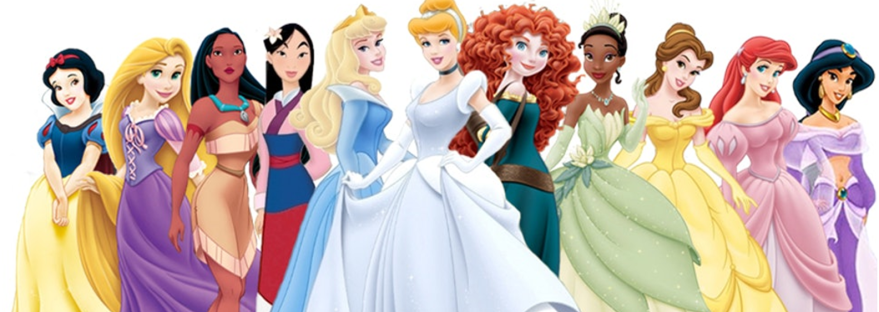
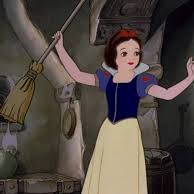 The huntsman takes Snow White into the woods, but finds her so lovely, that he can’t kill her. I could go for a AFP7 here (being pretty gets you out of anything) but ultimately, she is lovely and he doesn’t want to kill her for that reason. Fair enough. So he tells her what the Queen had ordered him to do and that she needs to run away and never return. Which she does. She comes across a little cottage in the forest, lets herself in, sees it’s filthy and wonders where the woman is to clean the house.
The huntsman takes Snow White into the woods, but finds her so lovely, that he can’t kill her. I could go for a AFP7 here (being pretty gets you out of anything) but ultimately, she is lovely and he doesn’t want to kill her for that reason. Fair enough. So he tells her what the Queen had ordered him to do and that she needs to run away and never return. Which she does. She comes across a little cottage in the forest, lets herself in, sees it’s filthy and wonders where the woman is to clean the house.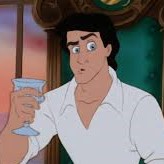 Now, I feel it would be unfair to men if I didn’t point our a few ‘anti-man’ points in that film. Specifically in relation to the dwarves. The implication that men living alone never clean their homes, as pretty unfair. That men living alone don’t clean themselves is quite unfair! Not to mention, that 7 adult men thought that there was actually a monster in their house, is making men look just as stupid as women are implied to be… but that’s it. Bearing in mind that this film was mostly likely marketed towards little girls, it does make women look rather pointless and stupid.
Now, I feel it would be unfair to men if I didn’t point our a few ‘anti-man’ points in that film. Specifically in relation to the dwarves. The implication that men living alone never clean their homes, as pretty unfair. That men living alone don’t clean themselves is quite unfair! Not to mention, that 7 adult men thought that there was actually a monster in their house, is making men look just as stupid as women are implied to be… but that’s it. Bearing in mind that this film was mostly likely marketed towards little girls, it does make women look rather pointless and stupid.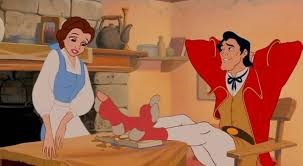 social pariah of sorts. Of course she then goes on to get Stockholm Syndrome. That will teach her for thinking she doesn’t need a man! If you’d let that lovely ‘Alpha Male’ Gaston marry you, you never would’ve ended up locked in a castle by a beast. So not sure if Beauty and the Beast really is that pro-feminist if we break it down.
social pariah of sorts. Of course she then goes on to get Stockholm Syndrome. That will teach her for thinking she doesn’t need a man! If you’d let that lovely ‘Alpha Male’ Gaston marry you, you never would’ve ended up locked in a castle by a beast. So not sure if Beauty and the Beast really is that pro-feminist if we break it down.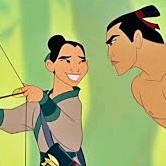 Now we are on to Mulan. One male from every Chinese household must go and fight in the war against the Hun army. As Mulan’s father is elderly and she has no brothers, she dresses as a man and goes off to fight in her father’s place. Total badass feminist, this one. In fact, I would say Mulan was the first official feminist role-model in a Disney Princess film. The only thing that takes anything away from that is that they still feel she needs a love interest (and a strapping Alpha love interest, at that). I don’t have a problem with characters having love interests, I just don’t feel that it is relevant to the story or adds anything to it. Still, Disney has definitely started heading in the right direction and we applaud that!
Now we are on to Mulan. One male from every Chinese household must go and fight in the war against the Hun army. As Mulan’s father is elderly and she has no brothers, she dresses as a man and goes off to fight in her father’s place. Total badass feminist, this one. In fact, I would say Mulan was the first official feminist role-model in a Disney Princess film. The only thing that takes anything away from that is that they still feel she needs a love interest (and a strapping Alpha love interest, at that). I don’t have a problem with characters having love interests, I just don’t feel that it is relevant to the story or adds anything to it. Still, Disney has definitely started heading in the right direction and we applaud that!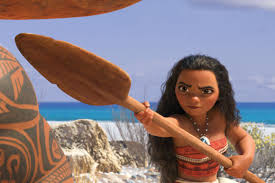 Moana (… well, ‘Moana’, 2016). The daughter of the chief of a Polynesian island nation, she will be inheriting the title no matter what and is being taught the ropes by her parents. When it becomes clear that a curse, caused by the theft of ‘the heart of Te Fiti’ by a demigod named Maui, is causing the island to essentially die, Moana sets off to sea, to find Maui and return the heart of Te Fiti.
Moana (… well, ‘Moana’, 2016). The daughter of the chief of a Polynesian island nation, she will be inheriting the title no matter what and is being taught the ropes by her parents. When it becomes clear that a curse, caused by the theft of ‘the heart of Te Fiti’ by a demigod named Maui, is causing the island to essentially die, Moana sets off to sea, to find Maui and return the heart of Te Fiti.